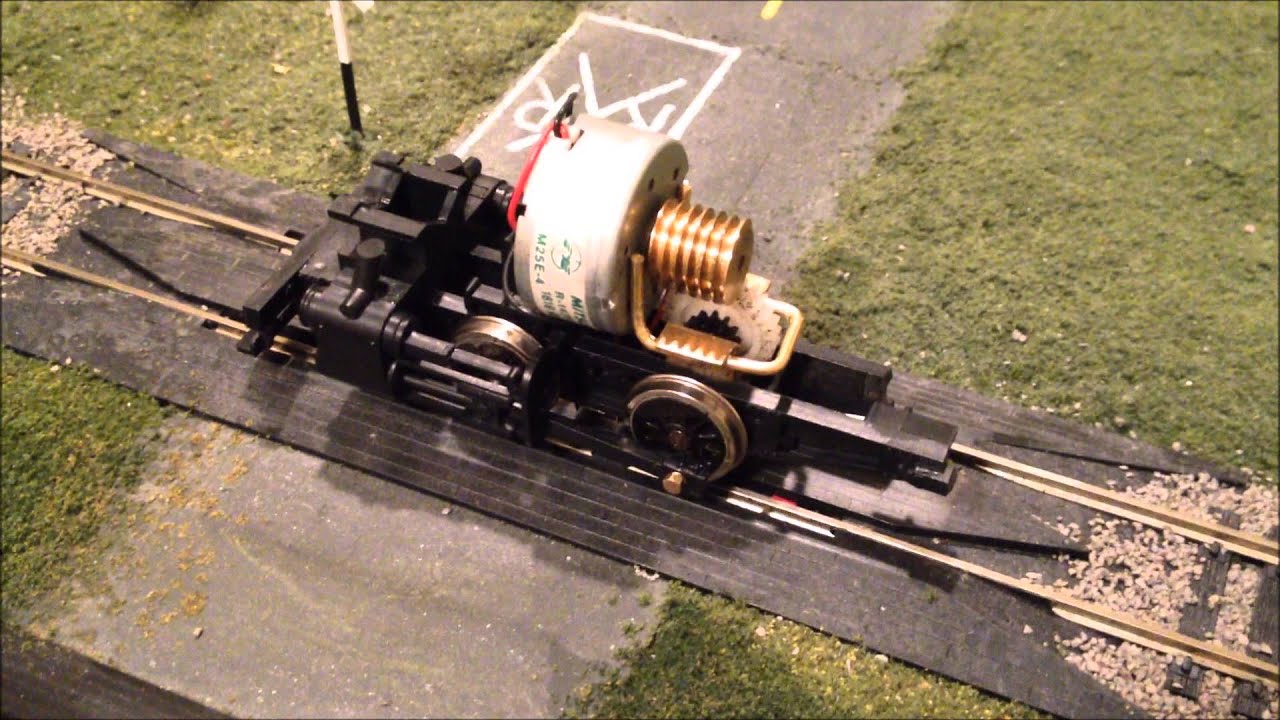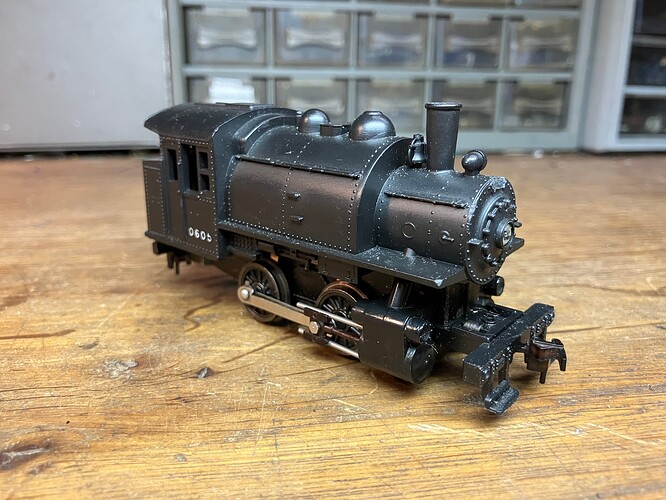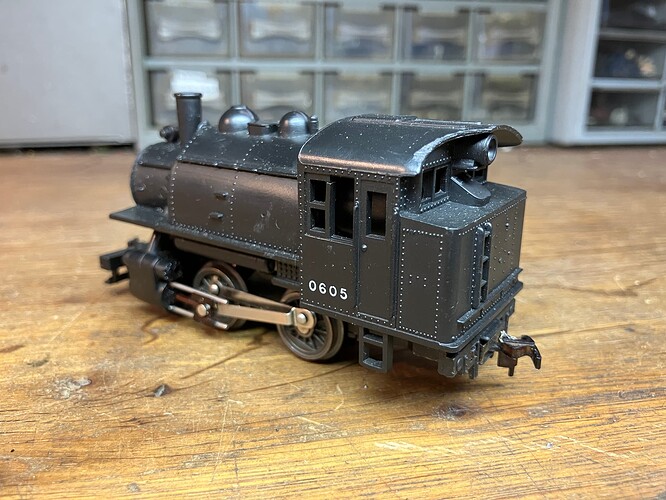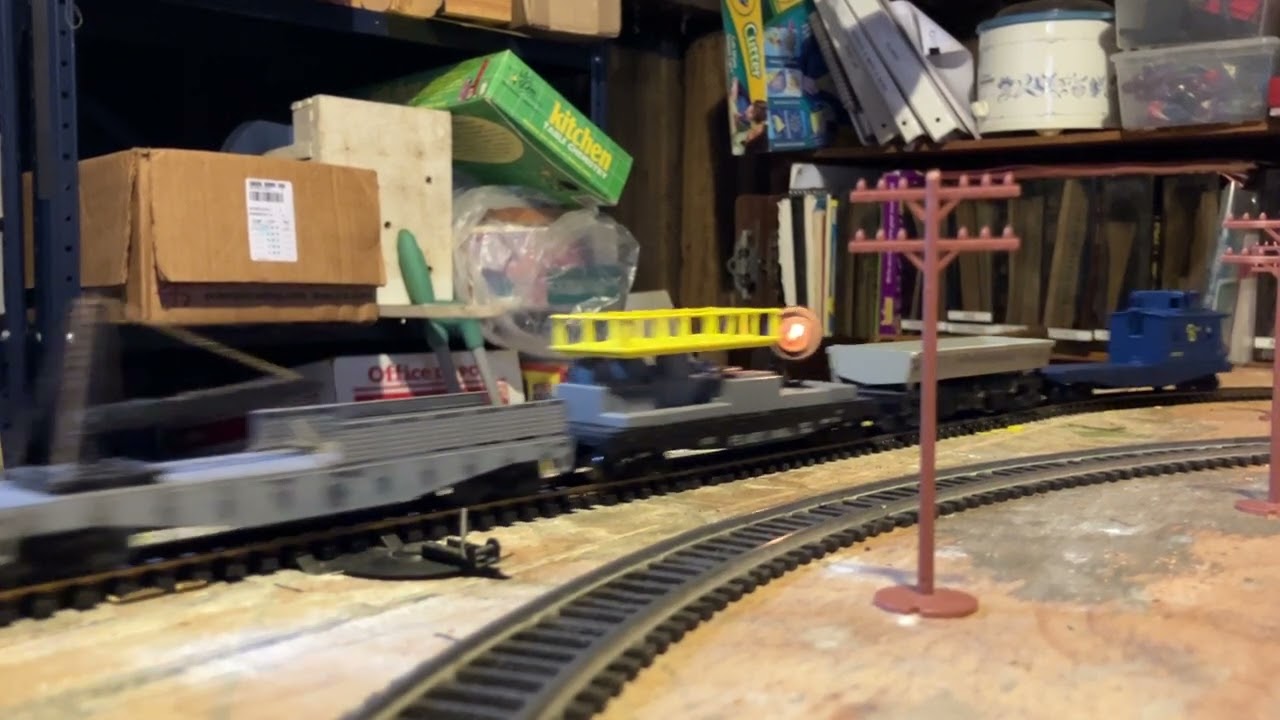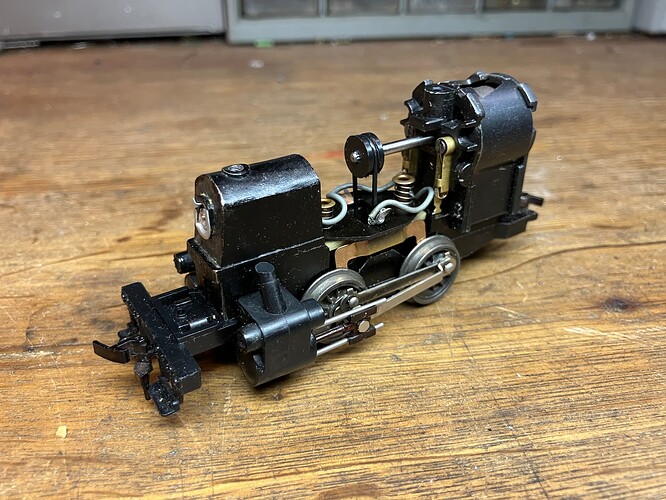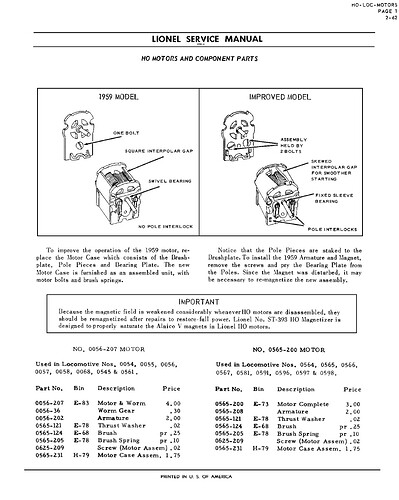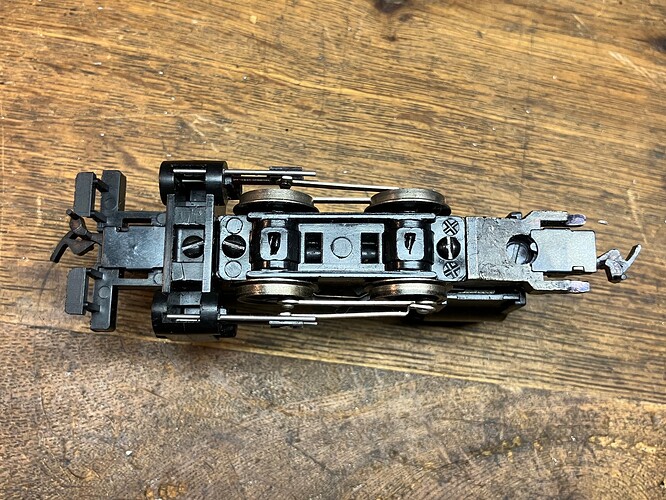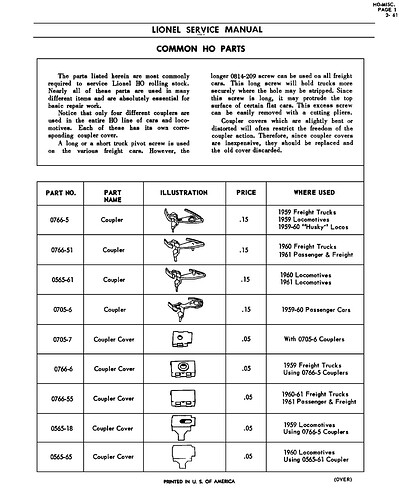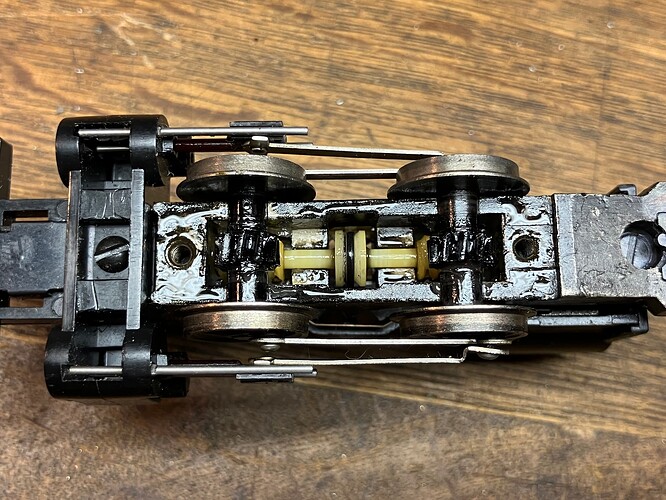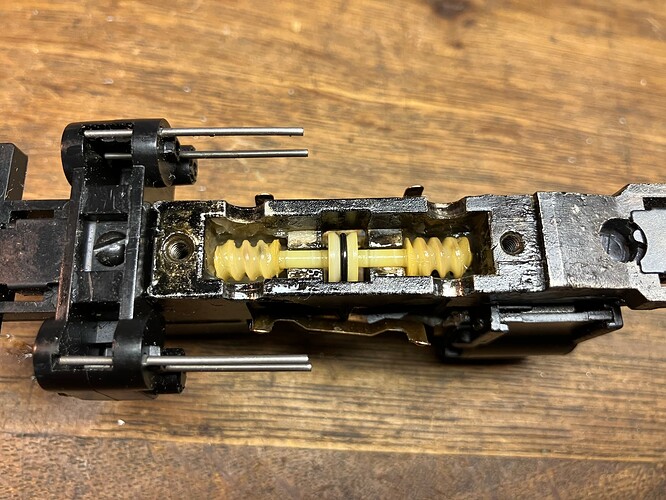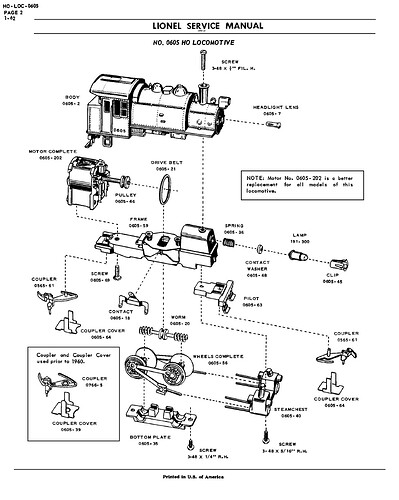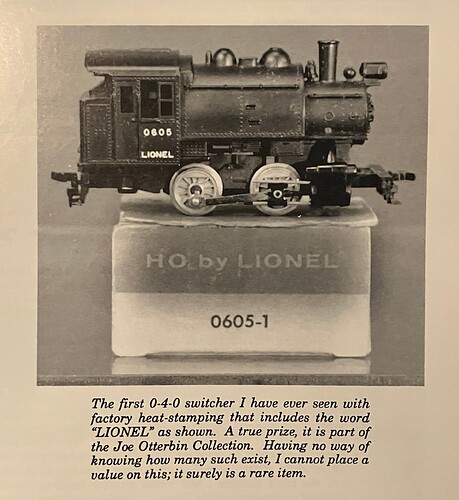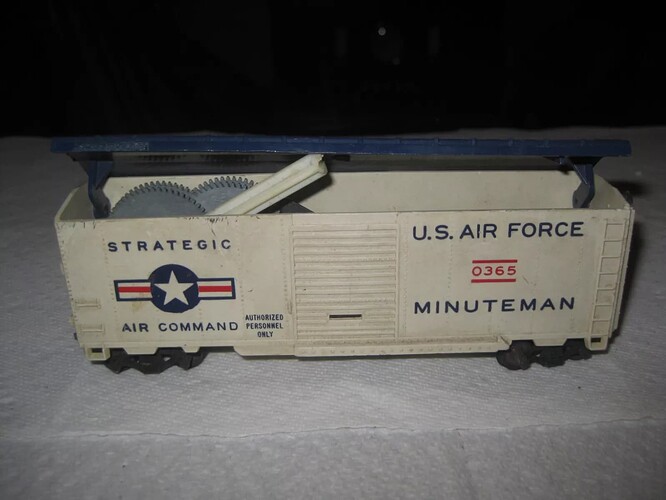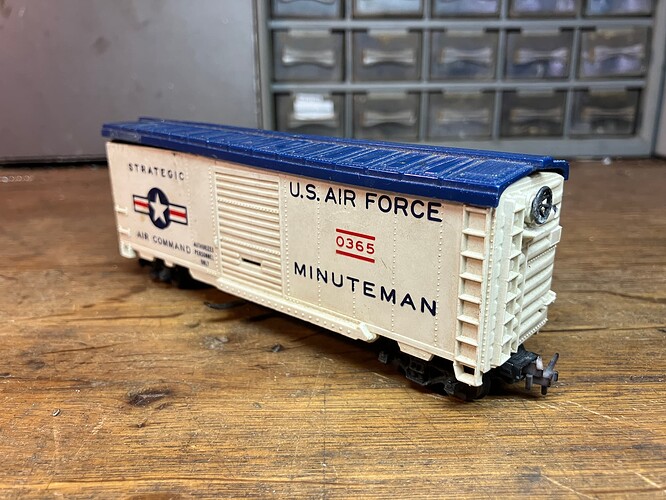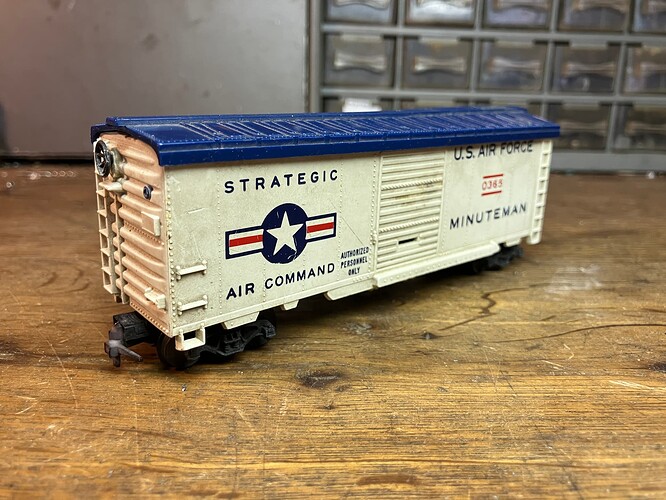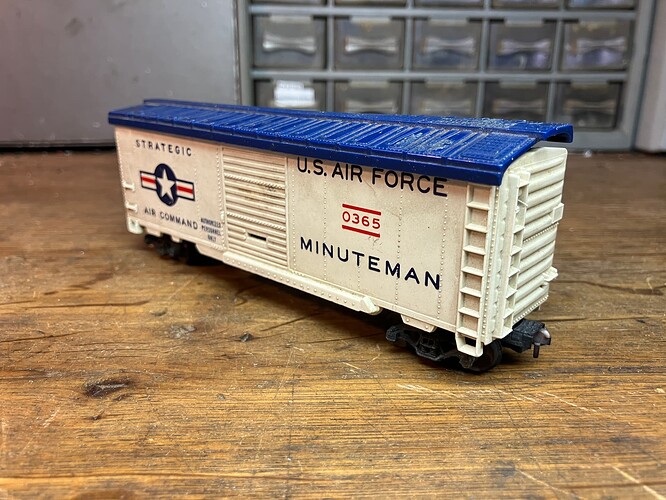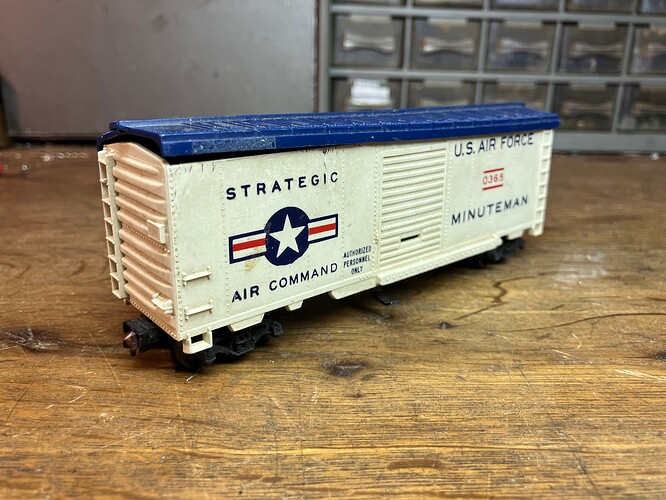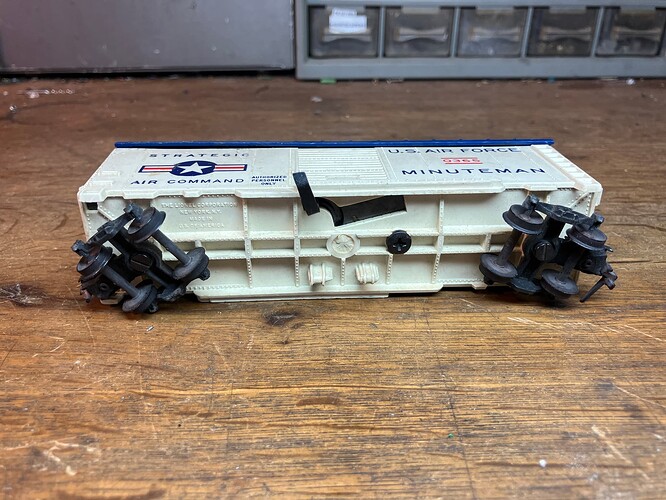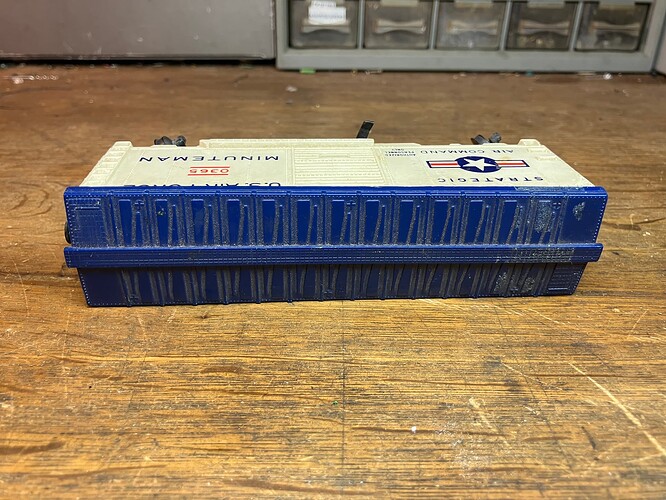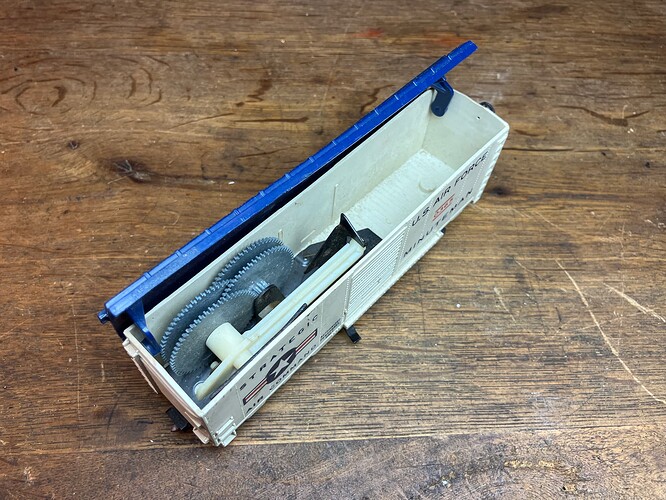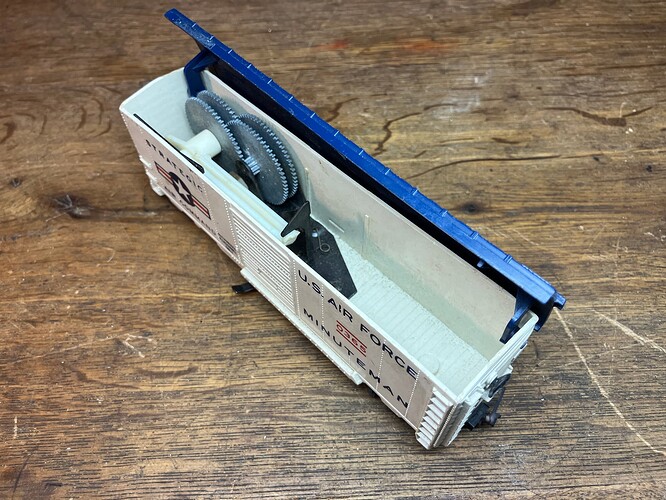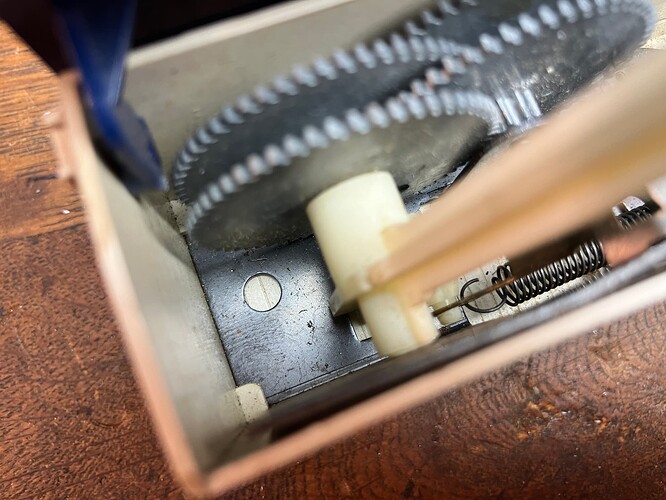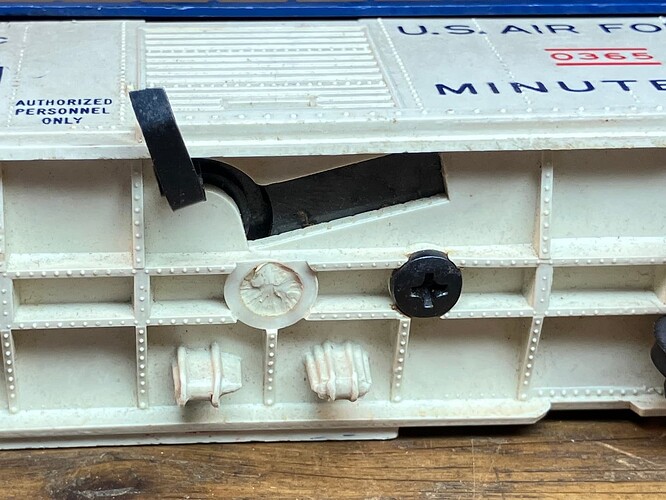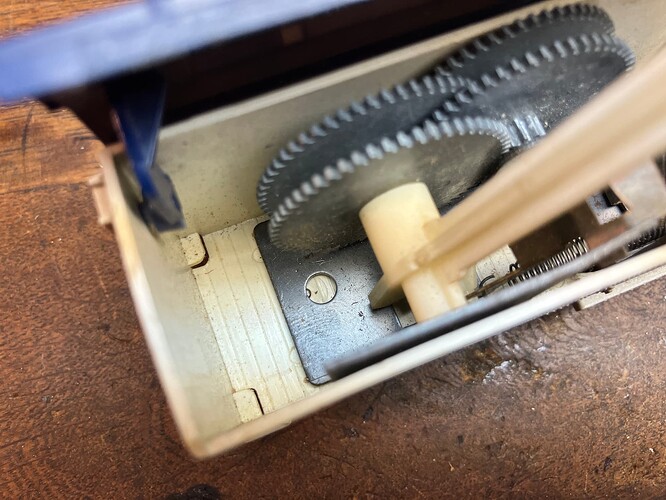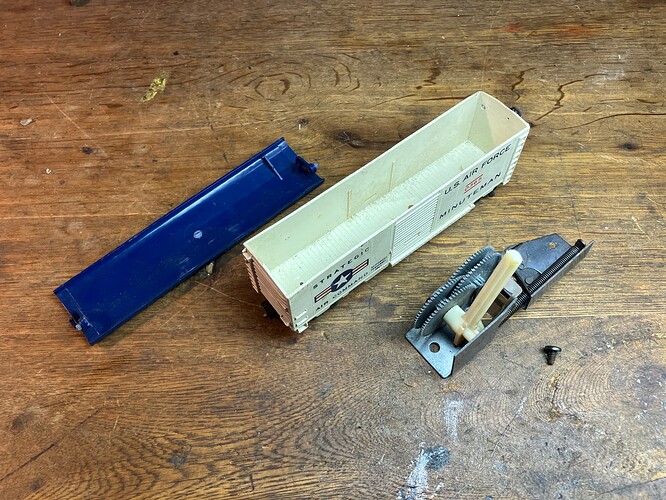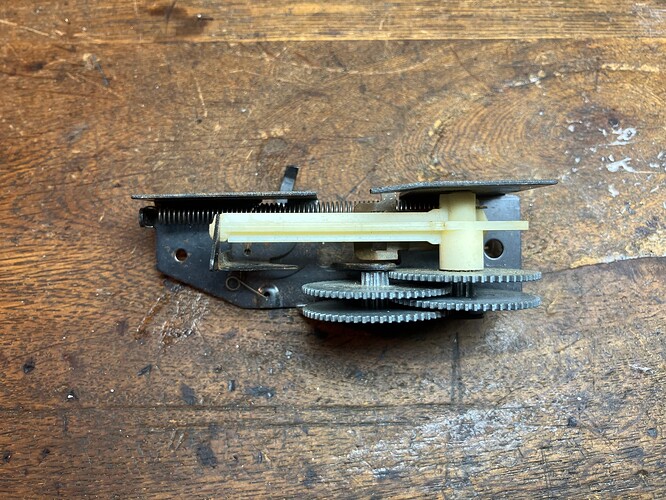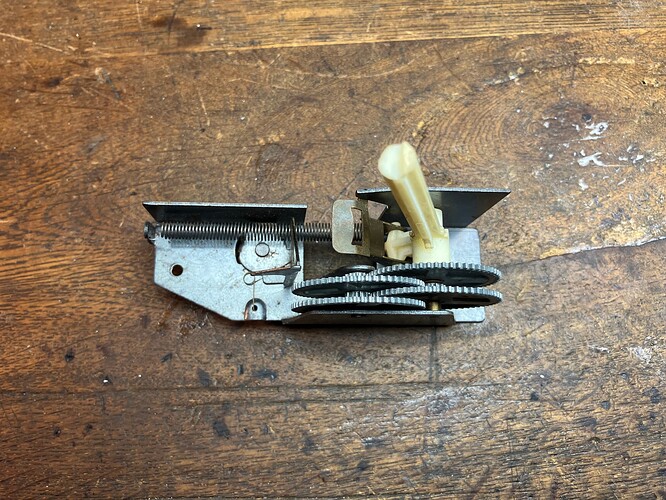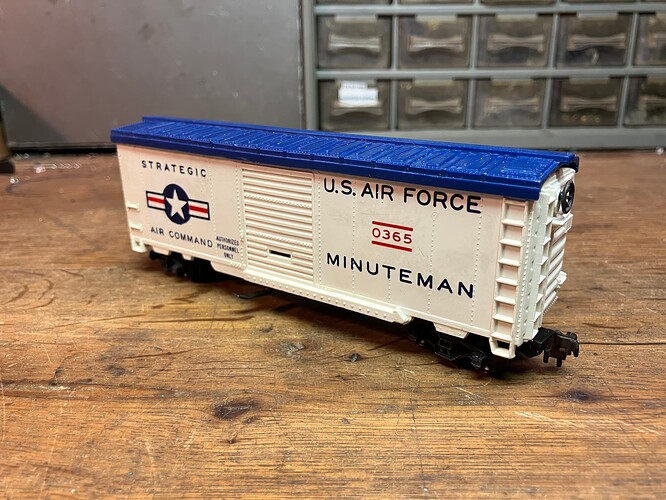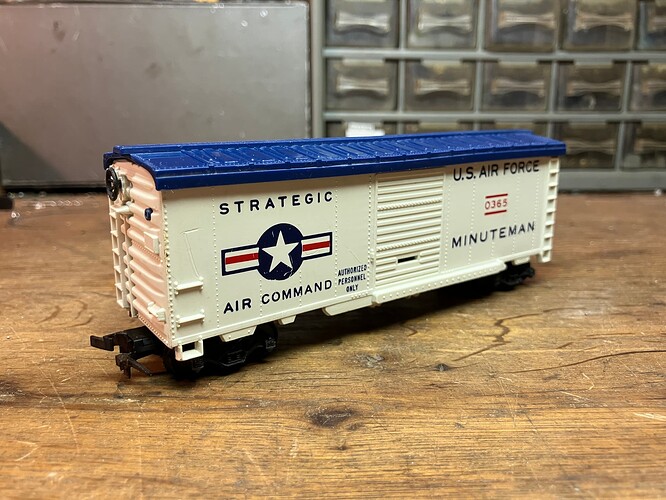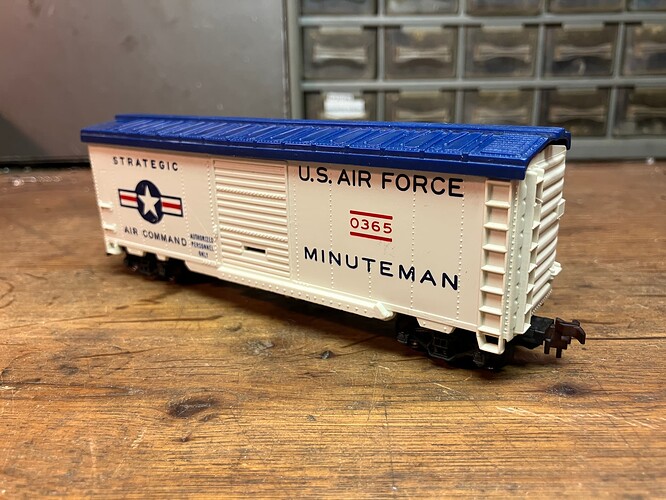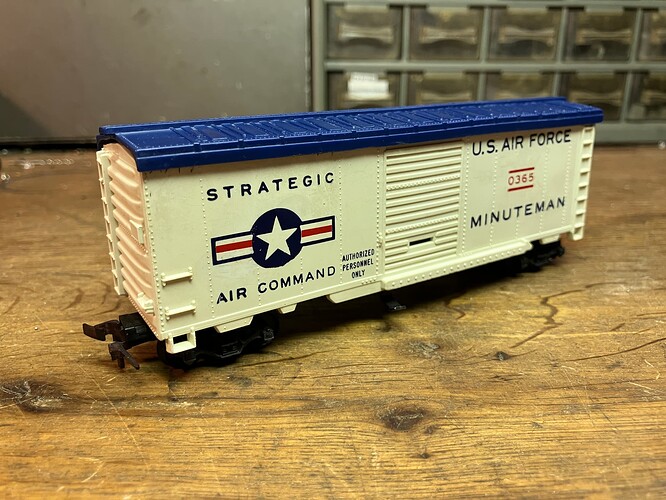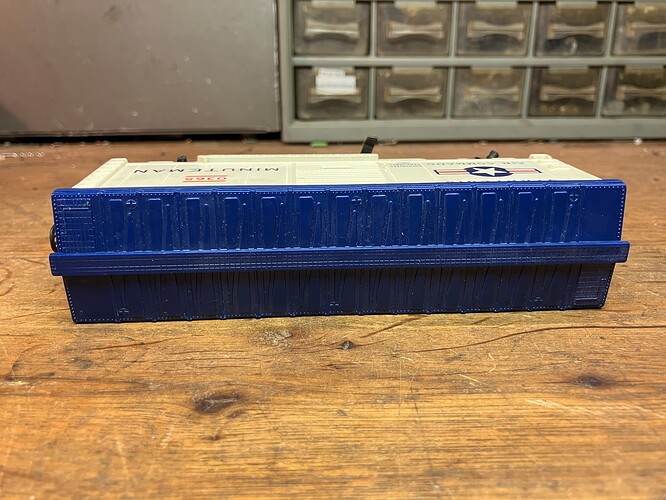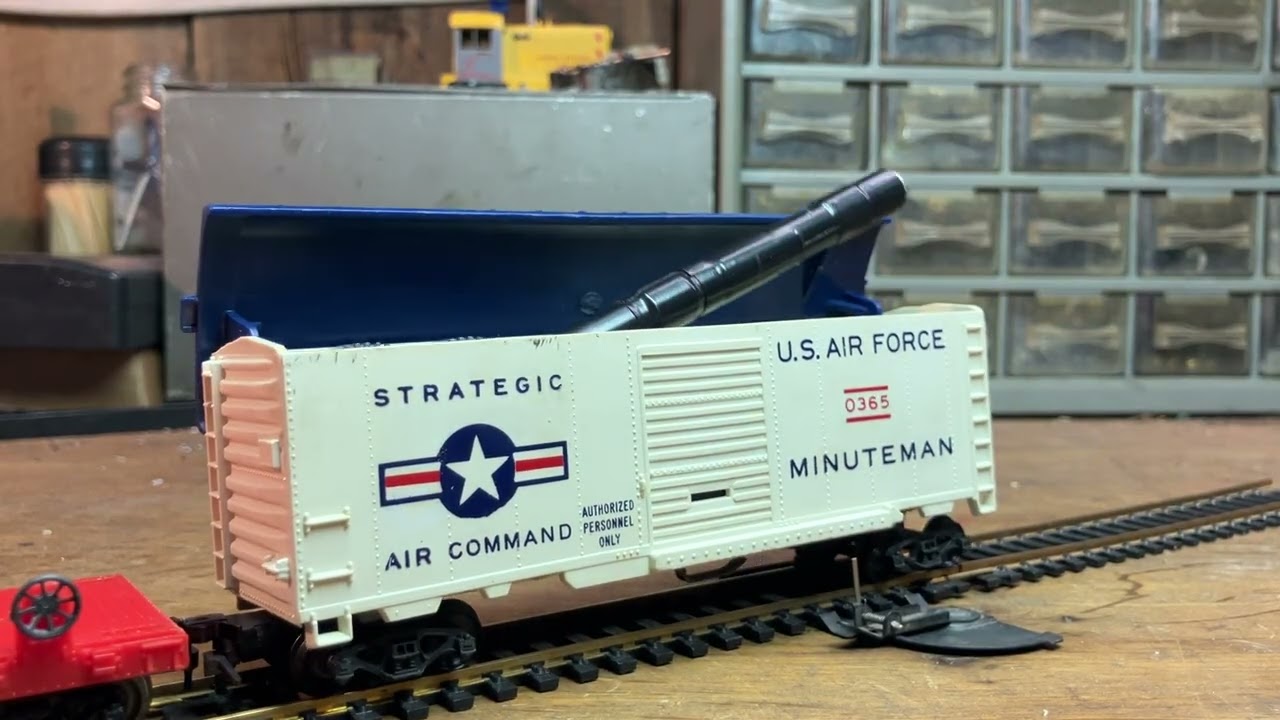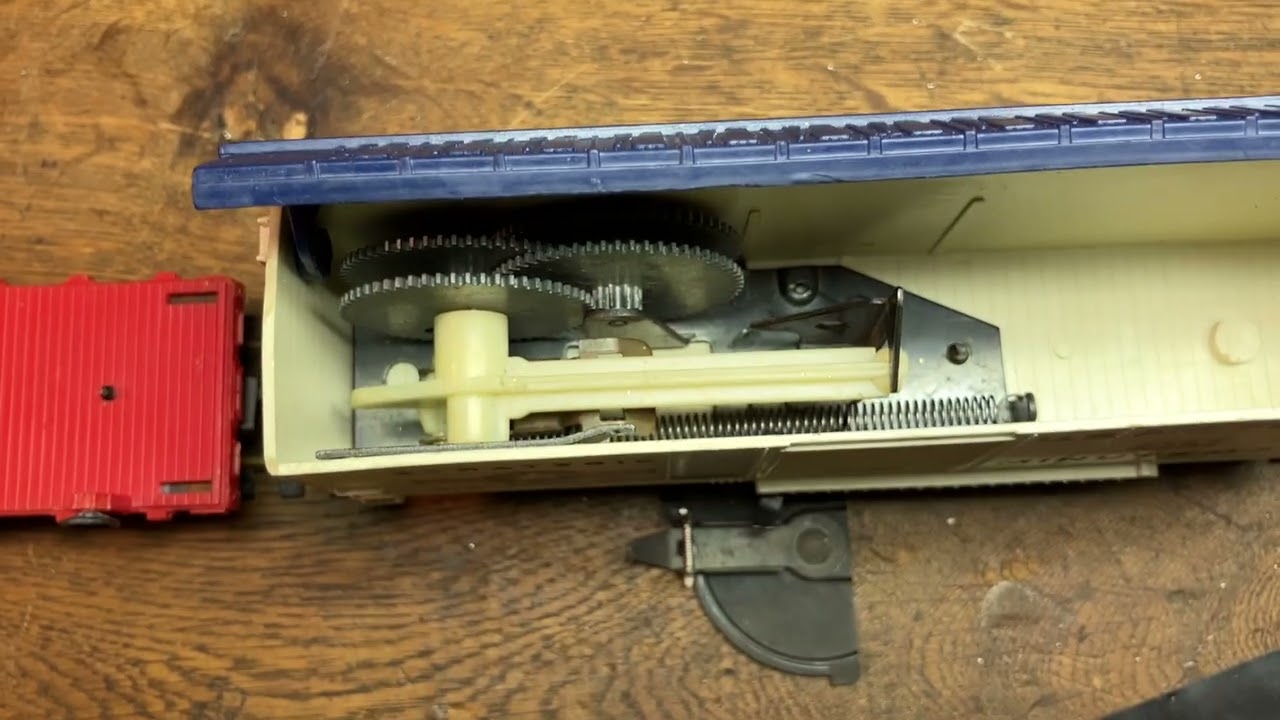Part III!
While I had the 0605 out and was photographing it, it occurred to me that it was worth showing off what is ‘under the hood’. The chassis is of diecast metal construction. The steam chest and pilot are separate plastic parts, and are secured to the chassis via a shared screw.
Of note here, Lionel manufactured the 0605 with two types of motor. In 1959, Lionel used the no. 0605-45 motor. Unfortunately, Lionel’s 1959 motors left something to be desired performance wise. It was bad enough that by 1960 Lionel had revised their design, issued new part numbers, and encouraged service stations to upgrade or replace the old motors. The 1960 revised motor for the 0605 was part no. 0605-202. As can be seen, my 0605 has the revised motor.
The presence of a 1959 style motor can help date a Lionel HO model to that year, but the opposite is less so since Lionel service stations were supplied with the later motors, to make repairs to 1959 locomotives.
Looking at the underside of the chassis, we can see a more reliable clue that this is a 1960 or later piece.
Locomotives produced in 1959 were equipped with 0766-5 couplers and 0605-39 coupler covers, which had a large hole in the middle to accept a pin on the chassis. In 1960, the locomotive was revised to accept the new 0565-61 “pin up” coupler, and a new coupler cover was used, 0605-64, which does not have the hole in the middle. This was consistent with changes made to the entire HO line, as 1959 models using the 0766-5 coupler were re-designed to accept the 0766-51 ‘pin down’ and 0565-61 ‘pin up’ couplers.
Removing the bottom cover plate from the locomotive, we can get a look at more of the mechanism from the underside.
The 0605, like many Lionel HO models from the 1959-1962 period, used a curious hybrid of a rubber belt and a worm gear to transmit torque from the motor to the wheels.
You can see the black rubber ‘O’ ring belt on the plastic pulley located in the middle of the worm shaft.
You may feel inclined to scoff at this design choice, but before you judge Lionel so harshly, it’s worth considering that at the time, Athearn had recently come out with their ‘Hi-F’ drive, which consisted of nothing more than rubber bands that transmitted torque directly from the motor shaft to the locomotive axles. They were unrealistically quick on their feet, but did offer smooth, quiet running. In fact, it was this very drive that was in every new HO model Lionel sold in 1958, when Athearn was supplying the line. Now, on the other hand, worm gears have long been advantageous for achieving smoother running at more realistic speeds, not to mention giving models better torque in a small space. Lionel’s engineers must have thought that surely, by combining rubber belts with a worm drive, they were creating the ultimate drive system.
Unfortunately, while it may have been a good idea on paper, there were a few flaws. Perhaps a subject for another time!
The 0605 is one of a limited number of HO items that received an exploded parts diagram for the Lionel service manual:
One last remark on the 0605, is to mention an ‘oddity’ shown in the 2nd edition of Greenberg’s Guide to Lionel HO: 1957-1966. Under the section on unusual pieces and forgeries, an 0605 is shown which was decorated differently from usual, having the 0605 stamped higher up on the side of the cab, and “Lionel” spelled out below it, where the number is normally found on regular production 0605s.
The book offers no insights into this unusual piece, besides that it exists. One has to wonder exactly how many are out there, when, and why they were made. I had never seen or heard of one until I saw this picture.
-El
Service Manual Pages are from the Olsen’s Toy Train Parts diagram library.
Unusual 0605 picture & caption from Greenberg’s Guide to Lionel HO 1957-1966 (2nd Edition)






